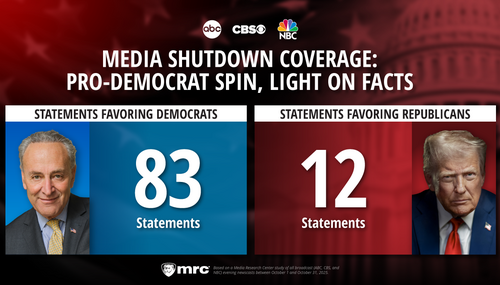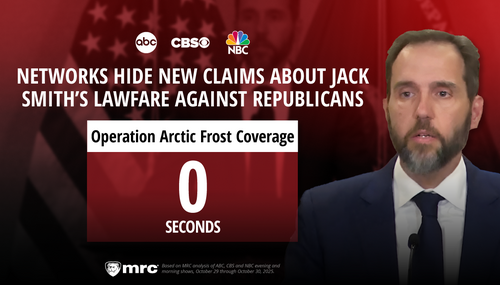With President Biden announcing new executive orders on guns Tuesday, CNN Newsroom invited Jennifer Mascia, senior writer for The Trace (an anti-gun rights publication), to share her dubious study. According to Mascia, a CNN contributor, gun manufacturers were directly in control of gun deaths in America as she suggested “when gunmakers ramped up production, gun deaths rose.” Of course, CNN gushed for this purported evidence to back their anti-gun rights agenda.
CNN’s Erica Hill boasted that Mascia had dug through ATF data to find the supposed number of guns in the U.S. “465 million guns have been produced in the last 125 years for the American market. And it's mostly – the vast majority are handguns. Whereas, you know, 30 years ago our gun culture was very much hunting and recreation. Now, it's concealable handguns for self-defense,” Mascia said.
What CNN hid from viewers was the fact that that figure didn’t take into account the number of firearms that were no longer in circulation for various reasons. Mascia did note that in her report but didn’t mention it on the air (by one estimate she noted, it was roughly 352 million).
But this wasn’t a big brain discovery. If you tally up the total number of cars made every year since the Model T and didn’t exclude those no longer in use and discarded, of course, the number would just grow exponentially. OMG, there are 1,000,000,000 cars on the road, no wonder your commute is so bad! (Not a real statistic).
Next came Mascia’s outrageous accusation that gun makers were driving gun deaths:
You know, we had record gun deaths in 2021. We had nearly 49,000 gun deaths just for that year. And I wanted to see what the effect was of all these guns flooding the marketplace on gun deaths. And when I charted them both, the visual was just stunning. They appeared to rise and fall in tandem over the last 50 years. So, it really does raise the question: what are all these guns doing? Are they contributing to gun violence?
“And it kind of contradicts that argument that the only thing that can stop a bad guy with a gun is a good guy with a gun. Well, at what point are all these guns going to lower gun deaths; one could ask,” she snarked, betrayed by her lack of objectivity.
In her study, Mascia seemed to suggest that gun makers held the puppet strings when it came to the correlation between guns produced and gun deaths: “When we charted gun manufacturing and imports alongside annual gun deaths going back to 1968, we found that when gunmakers ramped up production, gun deaths rose.”
But what Mascia’s graph (shown above but not the one CNN went with) shows was a correlation between the number of guns produced in a year and the number of deaths that year. But if we were to follow her logic, looking back at the exponential growth in the number of guns in circulation, no correlation exists. Why would gun death go down when the number of guns was increasing every year?
Building off that supposed correlation, CNN co-host Jim Sciutto noted that his guest found “that while rifles and shotguns outsold handguns until the 1990s, when it began as you were just noting marketing weapons to be concealable as self-protection” and sales of handguns took off.
“So, you know, about 30 years ago gun industry marketing changed and it became, ‘you need to protect yourself, you never know what's out there, you know, have a gun at the ready.’ And that really has had an effect on American gun buying,” she told Sciutto.
But what was going on in America 30 years ago in the late 80s and early 90s? Out-of-control crime in American cities around the country. The correlation then becomes a chicken-and-the-egg scenario: did making guns lead to violence or did violence lead to more people buying guns thus production met demand? There's also the correlation of increased moves for gun control driving sales and demand, which we saw with President Obama and she notes in her report (although she tried to tie it to race).
 To prove the latter, let’s look at Mascia’s own research. In 2020 and 2021, gun production and deaths spiked. What was going on at that time? Coast-to-coast riots in cities across America with progressive politicians and prosecutors letting out violent criminals, including ones charged with gun crimes.
To prove the latter, let’s look at Mascia’s own research. In 2020 and 2021, gun production and deaths spiked. What was going on at that time? Coast-to-coast riots in cities across America with progressive politicians and prosecutors letting out violent criminals, including ones charged with gun crimes.
During the pandemic, when there was a rash of attacks on Asian Americans, that demographic exploded in terms of first-time gun owners. CNN even reported on this.
Another tripping point in Mascia’s deductions was the fact that suicides have historically made up about two-thirds of all gun deaths in America; it’s something even PolitiFact admits. In fact, Mascia actually tried to discount the correlation. “…[W]e found that the relationship between gun production — particularly handgun production — and suicides is stronger than gun deaths overall. But correlation is not causation,” she reported.
To account for this, Mascia argued that just having a gun in your home increased the likelihood of shooting yourself, either accidentally or committing suicide. And as a surprise to know one, those who get in a car and travel have an increased chance of getting in a car accident. That’s not to discount how the suicide rate is intentionally rolled into the gun deaths rate when they discuss “gun violence.” We also know suicides surged during the pandemic because of the isolation and loneliness people were suffering from, which helps to explain the gun deaths in the last couple of years in her graph.
Of course, there was no mention of the Georgetown University study that found “guns are used defensively by firearms owners in approximately 1.67 million incidents per year.” So, there are the good guys with guns she was looking for.
Mascia's assertions only work if you look at them in a vacuum and don't take into account what happening in the country at these times. That's what she hoped for and it's what she got from CNN.
CNN’s reliance on bad-faith interpretation of the data was made possible because of lucrative sponsorships from Consumer Cellular and Procter & Gamble. Their contact information is linked.
The transcript is linked here.





